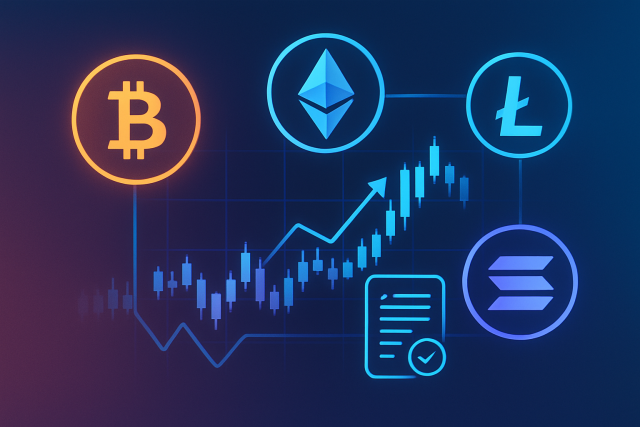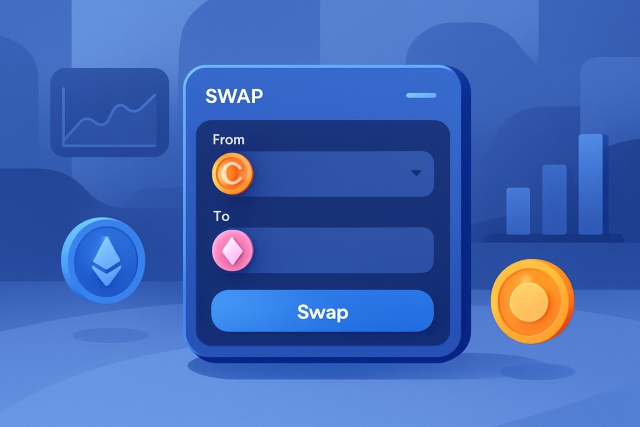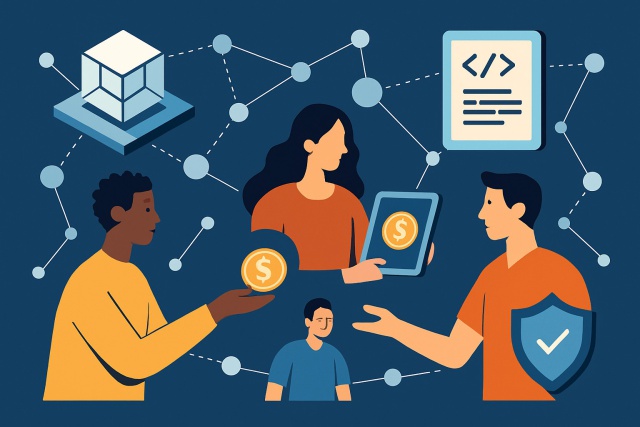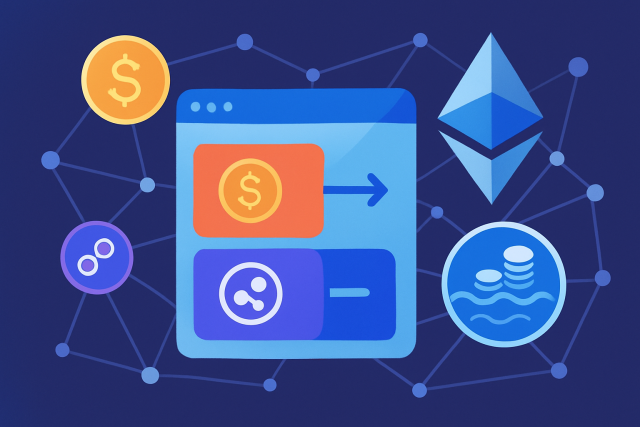What Is DeFi and How It Changes Finance?


Decentralized Finance, often called DeFi, is shaking up the way we think about money and financial services. But what is DeFi exactly? Instead of trusting traditional centralized institutions like banks and brokers, DeFi uses blockchain technology to create a more transparent and open financial playground. This setup lets users lend, borrow, trade, and invest without middlemen taking their cut. It trims down costs and makes financial services accessible to anyone with an internet connection—no fancy invite needed.
What does DeFi really mean
DeFi spans a broad spectrum of financial applications built on decentralized blockchain networks with Ethereum taking the lead. Unlike the usual rigmarole of traditional finance it operates without a central authority and lets individuals transact directly with one another and use programmable money through smart contracts.
- DeFi is decentralized, meaning no single person or group is calling all the shots—it's more like a community effort.
- It offers permissionless access, so anyone with an internet connection can jump right in without knocking on any doors.
- Transactions and activities are out in the open, fully transparent and ready for anyone to audit on public blockchains.
- Smart contracts handle financial services automatically, running on pre-set instructions without needing a middleman.
- DeFi platforms usually play well together, which means different apps can connect and work hand-in-hand without missing a beat.
Many newcomers often find DeFi jargon a bit overwhelming at first glance. A blockchain is like a super secure public ledger that everyone can see but no one can easily tamper with. A smart contract is basically an automated, programmable agreement that runs itself without needing a middleman. Tokens represent digital assets you can own or trade.
What is Behind the Magic of DeFi and What is DeFi?
DeFi mostly runs on blockchain networks that play nice with smart contracts. Ethereum was the trailblazer here and to this day remains the trusty backbone for a majority of DeFi apps. It provides the nuts and bolts for financial interactions that skip the usual trust and permission dance—everything’s handled by code rather than people.
Developers get their hands dirty by creating and launching smart contracts on the blockchain and bringing decentralized applications (dApps) to life.
Users then connect their digital wallets like the ever-popular MetaMask to interact with these dApps in a secure and hassle-free way.
Transactions jump straight onto the blockchain cutting out the middlemen completely—no extra stops or delays.
Protocols take care of user assets and agreements automatically by following preset rules that enforce terms without any human hand needed, which is a relief in many cases.
Popular DeFi services often include lending platforms where users can earn interest or borrow assets. They also include decentralized exchanges that let you swap tokens directly without fussing over an order book. Stablecoins stick close to fiat currencies like glue. Yield farming strategies let users supply liquidity to earn rewards.
| Financial Service | Traditional Finance | DeFi Equivalent | Intermediaries Involved | Accessibility | Transaction Speed |
|---|---|---|---|---|---|
| Lending and Borrowing | Banks and credit institutions | DeFi lending platforms (e.g., Aave) | Banks, loan officers | Often restricted by credit checks, which can slow things down | Can take anywhere from minutes up to days, depending on the process |
| Trading | Centralized exchanges and brokers | Decentralized exchanges (e.g., Uniswap) | Brokers, clearing firms | Open to anyone holding assets, no strings attached | Usually lightning-fast, from seconds to a few minutes |
| Stable Value Assets | Fiat currencies and central bank reserves | Algorithmic and collateralized stablecoins | Central banks | Accessible pretty much everywhere, all day every day | Nearly instant—blink and you will miss it |
| Asset Custody | Banks and custodians | Self-custodied wallets | Custodians, banks | Puts control squarely in the user’s hands, which is pretty empowering | Instant, with no waiting around |
| Payments | Payment processors and banks | On-chain crypto payments | Processors, banks | Global reach with no gatekeepers in sight | Typically wraps up within seconds |

How DeFi Is Quietly Shaking Up Finance
DeFi shakes up the usual financial system by cutting out central authorities, which usually means lower costs and a much simpler way to jump in. It brings more transparency to the table and hands users direct control over their funds instead of having to lean on institutions.
- Anyone anywhere on this spinning globe can jump into DeFi without needing approvals or credit checks.
- By cutting out the middlemen fees go down and transactions move much faster like taking the express lane.
- Smart contracts bring programmable money to life and open the door for new financial creations.
- DeFi markets don’t sleep. They run 24/7 unlike your typical bank that closes at five.
- Transparency here isn’t just a buzzword. Everyone can check the transaction history and rules anytime making it very trustworthy.
- Users hold the reins on their digital assets which greatly reduces those pesky counterparty risks.
Traditional banking feels a bit like a private vault, where banks hold all the keys and decide who gets to stash or withdraw cash. DeFi, on the other hand, flips the script by setting up a public, transparent vault that’s open for anyone to peek inside, check on, and use without hassle. It’s a fresh take that’s quietly remixing the whole idea of trust and control in finance.
Beyond innovation, DeFi hands people the reins to their own finances like never before. In countries where banking services are as rare as hen's teeth, it cracks open doors to options that used to feel miles away because of where you live or your credit history. This shift is a real game-changer, helping people plug into the global economy and pushing financial inclusion in places where banks have yet to set foot.
Typical Risks and Challenges in DeFi You Should Keep on Your Radar
DeFi certainly brings a bunch of advantages to the table but it’s not without its fair share of risks. The technology is still pretty fresh and evolving at a breakneck pace so those smart contracts might have some hidden weak spots that could end up causing hacks or lost funds. Meanwhile, regulations are still finding their footing which adds a bit of a wildcard to the mix.
- Bugs in smart contracts can cause all sorts of unexpected hiccups and sometimes leave the door wide open for hackers ready to exploit any weak spot.
- Rug pulls happen when developers suddenly vanish with the liquidity or funds leaving users holding the bag without a moment’s notice.
- Token prices are famously volatile and swing up and down in a heartbeat keeping everyone on their toes.
- Impermanent loss creeps in when you’re providing liquidity to pools and token prices don’t move in sync which can definitely sting.
- There’s no safety net like traditional consumer protections so users usually have to take security into their own hands—better safe than sorry as I’ve learned the hard way.
- Scalability issues on blockchains tend to cause slower or more expensive transactions especially when the network gets crowded and everyone’s trying to jump on at once.
Users generally try to play it safe by digging into projects carefully and picking platforms that have undergone thorough audits. They also avoid investments that push their risk boundaries too far.
Exploring What Lies Ahead for Finance with DeFi A Glimpse into the Future
DeFi innovations are racing ahead at full tilt to ramp up scalability and make things easier to use while improving cross-chain interoperability. Layer 2 solutions kick transactions into high gear and help trim costs. Bridges work behind the scenes to connect blockchains and move assets smoothly.
- Decentralized identity protocols are built to give users control over their personal data.
- Financial apps harnessing NFTs are shaking up the game by introducing fresh asset types and clever collateral options.
- Algorithmic stablecoins aim to keep prices steady without a central authority.
- Decentralized Autonomous Organizations or DAOs back community-driven governance for projects and make decisions a team effort.
- Programmable insurance products use blockchain to automate claims processing and risk management with no waiting for approvals.
Instead of brushing off DeFi as just another passing crypto fad, it is worth understanding what is DeFi and seeing it as a game-changing shift that could seriously reshape personal finance and the wider financial landscape.






